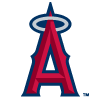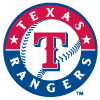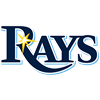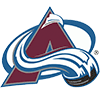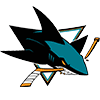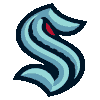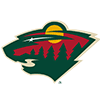There is, presumably, a correlation between people reading this article and people doing reasonably well in their fantasy leagues — not because I can claim any groundbreaking insights contained within, but because anyone bothering to read it has either subscribed to a fantasy sports website or has at the very least signed up for a free trial, both of which indicate a certain level of investment in the hobby.
For now, we'll focus on those of you who are still here despite the fact that your season hasn't gone as planned. Your team is hanging on by just enough thread that you're still staying plugged in, but you're not optimistic. You might need things not just to break right but to break very right to save your season. Luckily for you, the trade deadline offers a time of high volatility where such wild swings can happen.
The largest shifts in value at the deadline happen not to the players who headline a deal but to the players behind them who suddenly have playing time available. The stars can benefit from park-factor changes and from hitting next to better teammates, but they're already playing a lot. The next men up can go from not playing at all to playing nearly every day. To use a presumably hypothetical example, if Juan Soto were to get traded from San Diego to Philadelphia, he'd gain a few projected homers from the park factor shift, but whoever earns the at-bats he left behind on the
There is, presumably, a correlation between people reading this article and people doing reasonably well in their fantasy leagues — not because I can claim any groundbreaking insights contained within, but because anyone bothering to read it has either subscribed to a fantasy sports website or has at the very least signed up for a free trial, both of which indicate a certain level of investment in the hobby.
For now, we'll focus on those of you who are still here despite the fact that your season hasn't gone as planned. Your team is hanging on by just enough thread that you're still staying plugged in, but you're not optimistic. You might need things not just to break right but to break very right to save your season. Luckily for you, the trade deadline offers a time of high volatility where such wild swings can happen.
The largest shifts in value at the deadline happen not to the players who headline a deal but to the players behind them who suddenly have playing time available. The stars can benefit from park-factor changes and from hitting next to better teammates, but they're already playing a lot. The next men up can go from not playing at all to playing nearly every day. To use a presumably hypothetical example, if Juan Soto were to get traded from San Diego to Philadelphia, he'd gain a few projected homers from the park factor shift, but whoever earns the at-bats he left behind on the West Coast would see their projections jump by a far greater amount.
This year's deadline will feature more teams than usual who have too much talent to sell but whose records increasingly demand it. The Padres (30.6 percent), Yankees (30.3 percent), Mets (17.0 percent) and Cardinals (10.8) have all seen their projected playoff odds per FanGraphs crater after entering the year looking much more likely than not to make the postseason. A hot week from any of those teams could still leave them as buyers, but it's likely that at least one or two of them choose to move pieces who seemed immovable four months ago.
If you find yourself in a situation where you need some things to break your way to have any chance at sniffing a title this season, consider trying to acquire the next men up on those teams, the players who could go from strict bench roles or even the minors to starting four or five times a week or more. These players may not be interesting in shallow leagues — if they had a reasonable shot at making a significant impact there, they'd probably already be playing considering that their clubs are in desperate need of reversing a season-long skid — but in deeper leagues, they offer rare change for big upside and relatively little risk.
Some of those players could well feature in this column three weeks from now, once they've had the chance to settle into their new roles. For now, back to our regularly scheduled programming, taking a look at the players who have turned heads in recent weeks.
RISERS
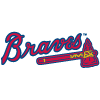 Matt Olson, 1B, Atlanta: Olson is a star player having a career year for the best team in baseball, but the outsize presence of teammate and MVP favorite Ronald Acuna Jr. means it almost feels correct to say he's "quietly" leading the National League in homers. The shape of the season perhaps explains why the player who ranks seventh in earned auction value may not be getting the attention he deserves. He started the season well, but not too well, meaning we never saw the "what's wrong with Matt Olson" news cycle nor the "Matt Olson is breaking out" news cycle, but he's nonetheless improved lately to the point that his full-season numbers don't entirely reflect the hitter he is right now. The turning point came right at the end of May:
Matt Olson, 1B, Atlanta: Olson is a star player having a career year for the best team in baseball, but the outsize presence of teammate and MVP favorite Ronald Acuna Jr. means it almost feels correct to say he's "quietly" leading the National League in homers. The shape of the season perhaps explains why the player who ranks seventh in earned auction value may not be getting the attention he deserves. He started the season well, but not too well, meaning we never saw the "what's wrong with Matt Olson" news cycle nor the "Matt Olson is breaking out" news cycle, but he's nonetheless improved lately to the point that his full-season numbers don't entirely reflect the hitter he is right now. The turning point came right at the end of May:
| Period | G | HR | Barrel% | Hard Hit % | BB% | K% | AVG/OBP/SLG | wRC+ |
|---|---|---|---|---|---|---|---|---|
| Through May 27 | 52 | 14 | 21.0% | 53.2% | 15.8% | 30.3% | .227/.355/.505 | 129 |
| Since May 28 | 41 | 16 | 16.9% | 59.7% | 10.3% | 22.2% | .291/.368/.642 | 164 |
In the early part of the year, Olson was striking out too much, nearly matching the 31.4 percent strikeout rate he posted in 2020, his worst year to date (104 wRC+). He was still a very effective hitter, as he walked a ton and hit the ball as hard as anybody, but he had another level to reach. This latest version has traded some walks and some barrel rate for a much better strikeout rate, which is an easy trade to make when your walk rate and barrel rate are so far above average to begin with. Olson looks like should be a true four-category star down the stretch rather than just a power hitter.
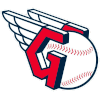 Josh Naylor, 1B, Guardians: For several years, Naylor made a surprising amount of contact for a power hitter but didn't actually possess the pop to necessarily deserve that label. Through the end of last season, Naylor had appeared in 325 major-league games and struck out just 17.8 percent of the time, but he paired that with a mediocre 7.3 percent barrel rate. Last year's 8.6 percent barrel rate represented a step forward, and it came with a career-high 20 homers in 122 games, but that still didn't count as big power. He may finally have earned the label, however, thanks in no small part to his four homers in five games since the break. He didn't strike out a single time over that stretch, so it's not as if he's suddenly selling out. Naylor's hot streak stretches back to late May. In his last 39 games, he's hit .397/.425/.660, and while his .415 BABIP is inflating his line, there's a lot to like in his performance. He's become very aggressive, walking just 4.8 percent of the time but also cutting his strikeout rate even further to 12.0 percent as a result. Attacking the ball has paid off, as he owns an 11.6 percent barrel rate and a 194 wRC+ over that run.
Josh Naylor, 1B, Guardians: For several years, Naylor made a surprising amount of contact for a power hitter but didn't actually possess the pop to necessarily deserve that label. Through the end of last season, Naylor had appeared in 325 major-league games and struck out just 17.8 percent of the time, but he paired that with a mediocre 7.3 percent barrel rate. Last year's 8.6 percent barrel rate represented a step forward, and it came with a career-high 20 homers in 122 games, but that still didn't count as big power. He may finally have earned the label, however, thanks in no small part to his four homers in five games since the break. He didn't strike out a single time over that stretch, so it's not as if he's suddenly selling out. Naylor's hot streak stretches back to late May. In his last 39 games, he's hit .397/.425/.660, and while his .415 BABIP is inflating his line, there's a lot to like in his performance. He's become very aggressive, walking just 4.8 percent of the time but also cutting his strikeout rate even further to 12.0 percent as a result. Attacking the ball has paid off, as he owns an 11.6 percent barrel rate and a 194 wRC+ over that run.
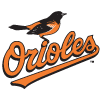 Kyle Bradish, SP, Orioles: Baltimore's rotation lacks the proven names that you'd want to see as part of a playoff push, but the group looks much closer to playoff-caliber following Bradish's recent emergence. The second-year righty posted a fine but forgettable 4.25 ERA through his first 11 starts, with his 4.03 xFIP suggesting he was basically getting what he deserved. In six outings since then, however, he's allowed a grand total of six runs, posting a 1.41 ERA and 0.81 WHIP. A .211 BABIP and 94.0 percent strand rate over that run indicate a fair amount of good luck, but his underlying numbers add up to a 3.50 xFIP, a very solid mark. Statistically, Bradish doesn't stand out in any one area, but he's been better than league average in all three of strikeout rate, walk rate and groundball rate, to a greater extent over that six-start run but also over the entire season. Just 14 pitchers (min. 90 innings) have beaten league average in all three categories this season, and just five (Clayton Kershaw, Framber Valdez, Logan Webb, Zach Eflin and Braxton Garrett) have beaten Bradish's marks across the board.
Kyle Bradish, SP, Orioles: Baltimore's rotation lacks the proven names that you'd want to see as part of a playoff push, but the group looks much closer to playoff-caliber following Bradish's recent emergence. The second-year righty posted a fine but forgettable 4.25 ERA through his first 11 starts, with his 4.03 xFIP suggesting he was basically getting what he deserved. In six outings since then, however, he's allowed a grand total of six runs, posting a 1.41 ERA and 0.81 WHIP. A .211 BABIP and 94.0 percent strand rate over that run indicate a fair amount of good luck, but his underlying numbers add up to a 3.50 xFIP, a very solid mark. Statistically, Bradish doesn't stand out in any one area, but he's been better than league average in all three of strikeout rate, walk rate and groundball rate, to a greater extent over that six-start run but also over the entire season. Just 14 pitchers (min. 90 innings) have beaten league average in all three categories this season, and just five (Clayton Kershaw, Framber Valdez, Logan Webb, Zach Eflin and Braxton Garrett) have beaten Bradish's marks across the board.
 Jake Fraley, OF, Reds: Fraley is in the perfect position to take advantage of the stream of exciting new arrivals in Cincinnati. He's a good enough player that his playing time against right-handers isn't threatened, and he was bad enough against lefties that he was already being platooned and thus had nothing to lose. A stronger surrounding lineup will continue to help Fraley's run and RBI totals, though the arrival of new teammates is probably not directly responsible for the fact that he's both hitting the ball harder and more frequently of late. Through the end of May, Fraley was hitting .248/.337/.399, good for a modest 93 wRC+. His five homers and seven steals kept him useful enough in fantasy, but it was a disappointing start. Since the calendar flipped to June, he's hit .303/.404/.607 (165 wRC+), adding eight more homers and nine more steals. He's cut his strikeout rate to 16.3 percent over that stretch, down from 18.3 percent through the end of May and down from 25.8 percent over the first four years of his career. He's also posted a 9.7 percent barrel rate, up from 6.6 percent through May 31, the same mark he managed over the last four seasons.
Jake Fraley, OF, Reds: Fraley is in the perfect position to take advantage of the stream of exciting new arrivals in Cincinnati. He's a good enough player that his playing time against right-handers isn't threatened, and he was bad enough against lefties that he was already being platooned and thus had nothing to lose. A stronger surrounding lineup will continue to help Fraley's run and RBI totals, though the arrival of new teammates is probably not directly responsible for the fact that he's both hitting the ball harder and more frequently of late. Through the end of May, Fraley was hitting .248/.337/.399, good for a modest 93 wRC+. His five homers and seven steals kept him useful enough in fantasy, but it was a disappointing start. Since the calendar flipped to June, he's hit .303/.404/.607 (165 wRC+), adding eight more homers and nine more steals. He's cut his strikeout rate to 16.3 percent over that stretch, down from 18.3 percent through the end of May and down from 25.8 percent over the first four years of his career. He's also posted a 9.7 percent barrel rate, up from 6.6 percent through May 31, the same mark he managed over the last four seasons.
 Will Benson, OF, Reds: Benson hit a promising .278/.426/.522 with 17 homers and 16 steals in 89 games for Triple-A Columbus last season, but he stumbled to a .450 OPS in his 28-game big-league debut and was shipped across Ohio in the winter for low-minors outfielder Justin Boyd. Benson made the Reds' Opening Day roster but failed to establish himself, going 1-for-20 for 12 strikeouts before being sent down in mid-April. He returned for two more games in late May before being called up for good on May 26. Since then, he's been one of the best hitters in baseball, hitting .336/.441/.617 with six homers and eight steals. His 178 wRC+ over that run ranks sixth among players with at least 120 plate appearances. Benson's remarkable turnaround has been keyed by a sudden improvement in plate discipline. Contrasting his initial big-league numbers with his numbers from this latest stretch paints a dramatic picture:
Will Benson, OF, Reds: Benson hit a promising .278/.426/.522 with 17 homers and 16 steals in 89 games for Triple-A Columbus last season, but he stumbled to a .450 OPS in his 28-game big-league debut and was shipped across Ohio in the winter for low-minors outfielder Justin Boyd. Benson made the Reds' Opening Day roster but failed to establish himself, going 1-for-20 for 12 strikeouts before being sent down in mid-April. He returned for two more games in late May before being called up for good on May 26. Since then, he's been one of the best hitters in baseball, hitting .336/.441/.617 with six homers and eight steals. His 178 wRC+ over that run ranks sixth among players with at least 120 plate appearances. Benson's remarkable turnaround has been keyed by a sudden improvement in plate discipline. Contrasting his initial big-league numbers with his numbers from this latest stretch paints a dramatic picture:
| Period | PA | wRC+ | BB% | K% | O-Swing% | Z-Swing% | O-Contact% | Z-Contact% |
|---|---|---|---|---|---|---|---|---|
| Debut through May 25 | 87 | -1 | 4.6% | 37.9% | 27.1% | 65.1% | 49.0% | 78.7% |
| May 26 to today | 127 | 178 | 15.7% | 21.3% | 18.6% | 62.6% | 60.5% | 85.8% |
| MLB Average | -- | 100 | 8.6% | 22.7% | 31.7% | 68.5% | 62.2% | 85.5% |
The first version of Benson we saw was already somewhat passive, but this version has become excellent at spitting on pitches outside the zone, leading to a much higher walk rate and much lower strikeout rate. Benson 2.0 also has an 11.3 percent barrel rate, well above his 2.1 percent mark previously. It's a remarkable all-around improvement at the plate, making him an important part of the resurgent Reds offense, if only as a platoon number nine hitter for now.
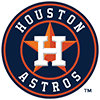 Corey Julks, OF, Astros: I can't say I paid much attention to Julks during draft season, as he was a 27-year-old with zero big-league experience to his name whose .854 OPS for Triple-A Sugar Land last season translated to just a 108 wRC+ once park and league are considered. On the surface, ignoring a player who's produced a 103 wRC+ as an overage rookie doesn't seem like an error, but if I'd known that he would start over two-thirds of his team's games to date, racking up seven steals, I would have taken more notice. The same is probably true of drafters in the NFBC Main Event, where he was selected in just one of 53 leagues. No part of his game stands out too much, and he probably wouldn't start too often on a fully healthy Astros team, but his .357/.430/.471 line with five steals over his last 20 games is worth taking note of. His control of the zone during that stretch is particularly impressive, as he paired an 11.4 percent walk rate with a 13.9 percent strikeout rate. He won't maintain the .414 BABIP he's managed during his hot streak, but if he can hold onto some of those plate-discipline gains, he might end up as a slightly above-average hitter with respectable speed. That plays in real life and in fantasy, and doesn't seem impossible to achieve.
Corey Julks, OF, Astros: I can't say I paid much attention to Julks during draft season, as he was a 27-year-old with zero big-league experience to his name whose .854 OPS for Triple-A Sugar Land last season translated to just a 108 wRC+ once park and league are considered. On the surface, ignoring a player who's produced a 103 wRC+ as an overage rookie doesn't seem like an error, but if I'd known that he would start over two-thirds of his team's games to date, racking up seven steals, I would have taken more notice. The same is probably true of drafters in the NFBC Main Event, where he was selected in just one of 53 leagues. No part of his game stands out too much, and he probably wouldn't start too often on a fully healthy Astros team, but his .357/.430/.471 line with five steals over his last 20 games is worth taking note of. His control of the zone during that stretch is particularly impressive, as he paired an 11.4 percent walk rate with a 13.9 percent strikeout rate. He won't maintain the .414 BABIP he's managed during his hot streak, but if he can hold onto some of those plate-discipline gains, he might end up as a slightly above-average hitter with respectable speed. That plays in real life and in fantasy, and doesn't seem impossible to achieve.
FALLERS
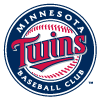 Byron Buxton, OF, Twins: Buxton could probably have featured as a faller at many different points this season. He finished April with a 139 wRC, but he proceeded to produce an 86 wRC+ in May and an 82 wRC+ in June. In July, he's sunk to a new depth, with his .133/.192/.200 slash line good for a wRC+ of 6. He went 0-for-4 with three strikeouts in the final game of the first half, then came out of the break going 0-for-21 with 13 more Ks and has since been stuck on the bench for a pair of games. He's now hitting .196/.285/.409 on the year. If you're looking for positives, you can point to Buxton's barrel rate, which sits at 13.8 percent for the season and 12.8 percent since May 1, but when that's been paired with a 31.3 percent strikeout rate, it hasn't been enough to sustain his offensive profile. A low-average, high-power profile might work for the Twins if Buxton were still providing elite defense in center, but with the team deciding to use him exclusively at DH this year, it's not close to sufficient. The plan worked in the sense that it's kept Buxton largely healthy (though he still hit the injured list for a couple weeks in early June), but if he keeps hitting like this, the Twins may no longer have the incentive to prioritize his health to such an extreme extent.
Byron Buxton, OF, Twins: Buxton could probably have featured as a faller at many different points this season. He finished April with a 139 wRC, but he proceeded to produce an 86 wRC+ in May and an 82 wRC+ in June. In July, he's sunk to a new depth, with his .133/.192/.200 slash line good for a wRC+ of 6. He went 0-for-4 with three strikeouts in the final game of the first half, then came out of the break going 0-for-21 with 13 more Ks and has since been stuck on the bench for a pair of games. He's now hitting .196/.285/.409 on the year. If you're looking for positives, you can point to Buxton's barrel rate, which sits at 13.8 percent for the season and 12.8 percent since May 1, but when that's been paired with a 31.3 percent strikeout rate, it hasn't been enough to sustain his offensive profile. A low-average, high-power profile might work for the Twins if Buxton were still providing elite defense in center, but with the team deciding to use him exclusively at DH this year, it's not close to sufficient. The plan worked in the sense that it's kept Buxton largely healthy (though he still hit the injured list for a couple weeks in early June), but if he keeps hitting like this, the Twins may no longer have the incentive to prioritize his health to such an extreme extent.
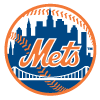 Jeff McNeil, 2B/OF, Mets: A roster as loaded as the Mets' doesn't sit five games under in late-July without several different things going wrong at once, but the sudden wilting of key members of the supporting class like McNeil certainly hasn't helped. McNeil rebounded from a down 2021 season to hit more than .300 and post a wRC+ north of 130 for the fourth time in his five MLB campaigns last year, but his age-31 season has been his worst yet. Through the end of May, that wasn't entirely the case, as his .288/.364/.359 slash line was good for a 109 wRC+ — below expectations, perhaps, but hardly notable. Since the calendar flipped to June, things have gotten ugly, with McNeil hitting .191/.265/.270, good for a wRC+ of 56. His strikeout rate has also jumped to 16.0 percent, nearly double his 8.8 percent mark from the first two months. 16.0 percent is still a good strikeout rate (it would rank 27th among qualified hitters), but when you don't hit for power, don't take many walks, don't run and don't offer much defensive value, it's not good enough. McNeil needs to be truly elite at making contact for his profile to work, and at his age, it's possible those days are behind him.
Jeff McNeil, 2B/OF, Mets: A roster as loaded as the Mets' doesn't sit five games under in late-July without several different things going wrong at once, but the sudden wilting of key members of the supporting class like McNeil certainly hasn't helped. McNeil rebounded from a down 2021 season to hit more than .300 and post a wRC+ north of 130 for the fourth time in his five MLB campaigns last year, but his age-31 season has been his worst yet. Through the end of May, that wasn't entirely the case, as his .288/.364/.359 slash line was good for a 109 wRC+ — below expectations, perhaps, but hardly notable. Since the calendar flipped to June, things have gotten ugly, with McNeil hitting .191/.265/.270, good for a wRC+ of 56. His strikeout rate has also jumped to 16.0 percent, nearly double his 8.8 percent mark from the first two months. 16.0 percent is still a good strikeout rate (it would rank 27th among qualified hitters), but when you don't hit for power, don't take many walks, don't run and don't offer much defensive value, it's not good enough. McNeil needs to be truly elite at making contact for his profile to work, and at his age, it's possible those days are behind him.
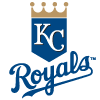 Nick Pratto, 1B/OF, Royals: For a minute there, Pratto looked to be developing into something interesting. Through May 14, he was hitting .350/.435/.533, albeit in just 18 games thanks to a three-wink stint in the minors in April. A .514 BABIP over that run made it very easy to predict significant regression, however, and that regression has come hard. Since that early hot streak ended, Pratto has hit .210/.295/.331, and his .351 BABIP suggests that he's still benefiting from some good luck. It takes a high BABIP just to get above the Mendoza line when your strikeout rate sits at 40.1 percent. Zoom in on just the last month and the picture gets even uglier, with Pratto striking out 46.6 percent of the time across 24 games while slashing .165/.239/.291. His power hasn't deserted him, as he still owns a 10.3 percent barrel rate even during that deep slump, but above-average power isn't nearly enough when you strike out almost half the time. The 28-69 Royals have no reason not to let Pratto work through his struggles in the big leagues, but he doesn't need a spot in your lineup until he starts turning things around.
Nick Pratto, 1B/OF, Royals: For a minute there, Pratto looked to be developing into something interesting. Through May 14, he was hitting .350/.435/.533, albeit in just 18 games thanks to a three-wink stint in the minors in April. A .514 BABIP over that run made it very easy to predict significant regression, however, and that regression has come hard. Since that early hot streak ended, Pratto has hit .210/.295/.331, and his .351 BABIP suggests that he's still benefiting from some good luck. It takes a high BABIP just to get above the Mendoza line when your strikeout rate sits at 40.1 percent. Zoom in on just the last month and the picture gets even uglier, with Pratto striking out 46.6 percent of the time across 24 games while slashing .165/.239/.291. His power hasn't deserted him, as he still owns a 10.3 percent barrel rate even during that deep slump, but above-average power isn't nearly enough when you strike out almost half the time. The 28-69 Royals have no reason not to let Pratto work through his struggles in the big leagues, but he doesn't need a spot in your lineup until he starts turning things around.
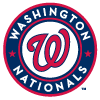 Hunter Harvey, RP, Nationals: I don't cover many injuries in this section, but Harvey's elbow strain is significant enough to deserve a paragraph. As of writing, his MRI results haven't returned, but I can't imagine they'll be good. Even in the most positive case, this is much more likely to be the start of a major issue than an isolated incident, given Harvey's history. He deserves a spot mostly to note how unfortunate it is to see him going through injury issues yet again, right as he had just taken over the closer job in Washington. He lasted just over three weeks with the role, recording each of the team's six saves from June 21 through July 14, but soreness (then reported to be in his forearm and triceps) showed up in his next appearance. The Nationals may simply be using extra caution, and both Harvey's health track record and their sub-.400 winning percentage give them plenty of reason to do so, but it's hard to be optimistic about a player who totaled 173 innings across all levels over a seven-year span from 2015 to 2021. His 79.2 MLB innings for the Nationals over the last two years have been very good — a 2.82 ERA, 1.07 WHIP and 28.5 percent strikeout rate — but is that the longest (and last) stretch we'll ever see like that from Harvey again?
Hunter Harvey, RP, Nationals: I don't cover many injuries in this section, but Harvey's elbow strain is significant enough to deserve a paragraph. As of writing, his MRI results haven't returned, but I can't imagine they'll be good. Even in the most positive case, this is much more likely to be the start of a major issue than an isolated incident, given Harvey's history. He deserves a spot mostly to note how unfortunate it is to see him going through injury issues yet again, right as he had just taken over the closer job in Washington. He lasted just over three weeks with the role, recording each of the team's six saves from June 21 through July 14, but soreness (then reported to be in his forearm and triceps) showed up in his next appearance. The Nationals may simply be using extra caution, and both Harvey's health track record and their sub-.400 winning percentage give them plenty of reason to do so, but it's hard to be optimistic about a player who totaled 173 innings across all levels over a seven-year span from 2015 to 2021. His 79.2 MLB innings for the Nationals over the last two years have been very good — a 2.82 ERA, 1.07 WHIP and 28.5 percent strikeout rate — but is that the longest (and last) stretch we'll ever see like that from Harvey again?












